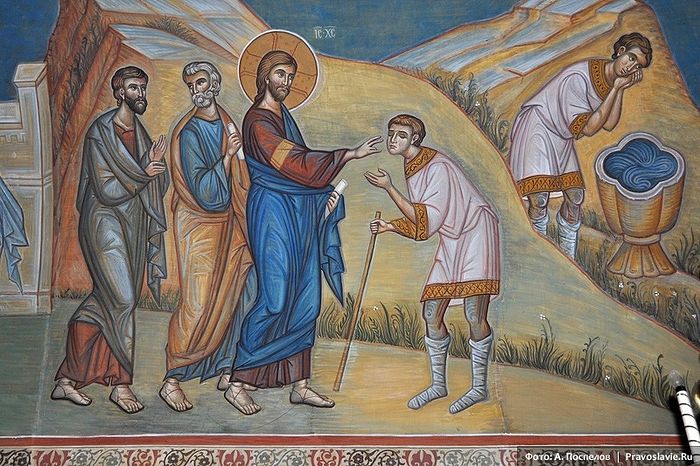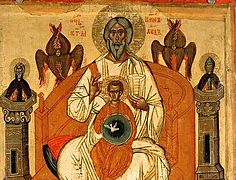 Healing of the man blind from birth. Photo: A. Pospelov/Pravoslavie.ru
Healing of the man blind from birth. Photo: A. Pospelov/Pravoslavie.ru
The Gospel man born blind began to see both physically and spiritually. He no longer needed his cane—neither the physical nor the spiritual one. With the help of the first he reached the Pool of Siloam, and with the help of the second he gained the Inexhaustible Spring. The first he might have left at the bathhouse or given to another poor blind man, and the second he passes on to those who are still lost in spiritual darkness. There is no need to search for such a cane in special shops, or break one off from a tree. It was placed by St. John into the Gospel. Whoever wants it can take it.
Are there many who want it? Very few.
There are few who honestly ask in the footsteps of the man born blind, “Who is he, this Christ, that I might believe in him?” (cf. Jn. 9:36).
Here is a dialogue that often takes place during the preface to a discussion with an adult who wishes to receive baptism and become a member of the Church.
“In order to be baptized, you need to have the Christian faith. Are you a believer?”
“Yes, I believe in God.”
“Do you believe in Christ the Savior?”
“Yes, of course.”
“And Who is He, Jesus Christ, in Whom you believe? What do you know about Him? Why do you want to become His follower?”
“I don’t know. I haven’t read it. Why should I? I believe in my soul.”
As you can see, this man does not have a cane, and we have to put one in his hand. Take it, take the question of the man born blind, take his desire to make sense of it all and take a conscious step towards Christ, in order to worship Him sincerely. Take it!
Some take it, others don’t.
It is interesting how Christ answers the man born blind. Thou hast both seen him, and it is he that talketh with thee (Jn. 9:37). There is something to think about here. First of all, the Greek word use gives us the right to the following translation: “You have gotten your sight, you have begun to see, and now you see Him…” Then the Lord adds: “It is He Who is talking with you”—in order to turn the formerly blind man back to his audial memory. After all, a blind person compensates for his lack of vision with hearing, and his hearing is much more developed that that of the sighted. It is the same with his audial memory. Christ as if says to him, “Compare the voice that sent you to the pool of Siloam with My voice. That was Me. Then you only saw Me, but now you can also see Me. I am the Messiah.”
It seems to me that whoever takes the New Testament into his hands should experience something like this. He hears the voice of Christ reaching him from the lines of Scripture and should compare it with the inner voice of “God in the soul”, Who spoke to him before, Who led him to this open Bible, and Who gave him the strength to live and go further. To go where? To Him!
Do you hear? It is He!
And now take a good look at Him, at His eyes filled with love and compassion, at the depth of His pierced side, at the wounds on His hands and feet; at His (and that means, your) glorious Resurrection!
And worship Him (Jn. 9:38).


